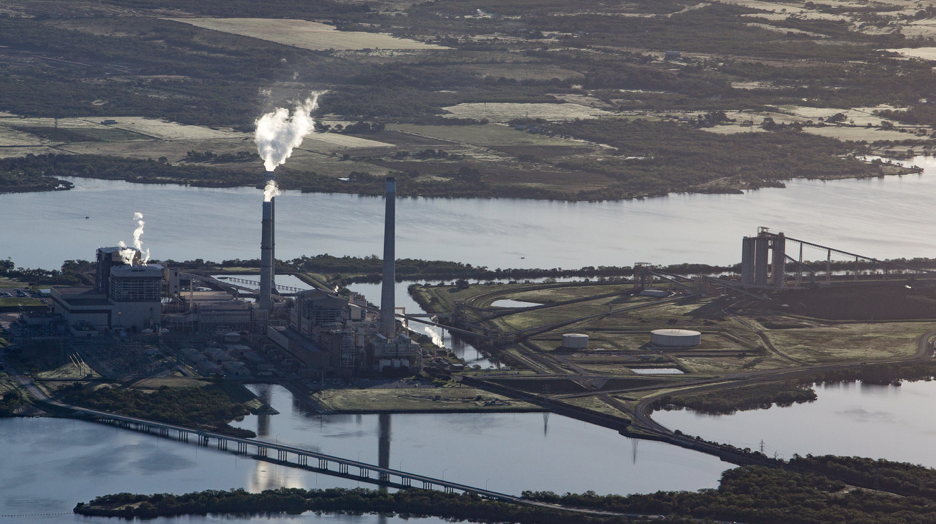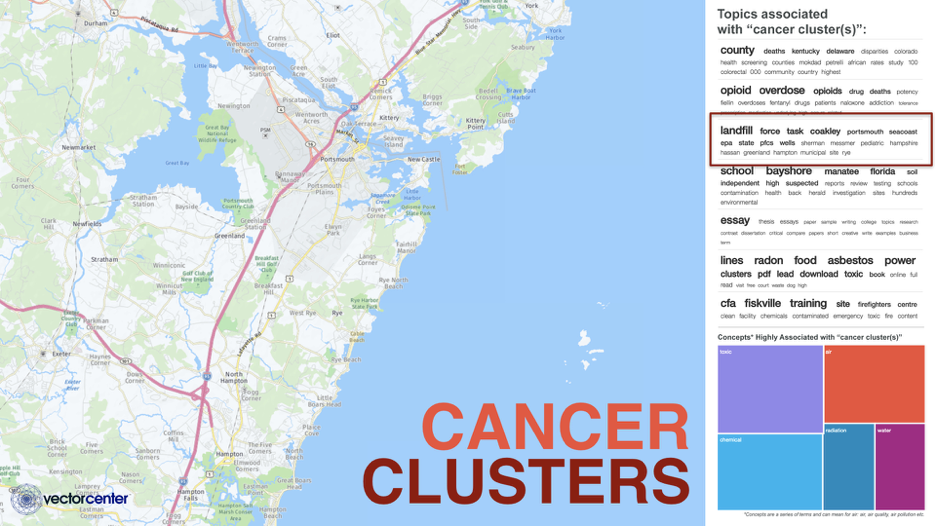
Photo by J. Carl Ganter/Vector Center
What increases your risk of getting cancer? Is perception aligned with reality?
This is Part Three of three articles revealing results of a study by Vector Center for Less Cancer’s National Cancer Prevention Day Workshop.
Environmental Factors — Cancer Clusters
Evidence-based science has proven environmental toxins can cause cancer. Cancer clusters are geographic areas showing higher than expected cancer rates that are traced to a carcinogenic contamination source. Exposure may occur by the contaminant being present in groundwater used for drinking water.
For example, many in New Hampshire have worked tirelessly to investigate and prove existence of the Seacoast cancer cluster. In this story, perception data led. For years, people believed that a pediatric cancer cluster existed. Data was anecdotal. Incidences of two rare childhood cancers and pediatric brain cancers were reported to be higher than expected rates. Concerned citizens reported this to the New Hampshire Department of Health and Human Services in March 2014.

The Governor established a task force, and EPA testing later revealed increased levels of PFCs in ground and surface waters near a landfill. A step at a time, other potential causes were investigated and eliminated through patient surveys and environmental sampling, in accordance with evidence-based scientific standards. Cancer rates were questioned for significance. Analysis of hydrology reports revealing water flow and migration patterns, including to private wells used for drinking water, revealed PFC contamination. After 3 years of politicized debate surrounding the tireless scientific investigation, the final report issued October 2017 concluding that a cancer cluster exists.
Proof of a cancer cluster is very difficult given multiple cancers, multiple possible causes for the cancers, migrating populations and moving water tables where groundwater is involved. As with many cancer cluster investigations, the Seacoast cluster reality data trailed behind public perception and it was the grass-roots perception on the ground that started the investigation.
Now that the Seacoast cancer cluster is scientifically proven, perception and reality are better aligned. Yet, action plans for remediation and monitoring need to be developed and carried out to fix it. Data gaps still exist for water migration patterns. It is not certain how far the contaminated waters reach. Other cancers may be involved. There remains need for gathering and analyzing science data over time as ground water moves. And policymakers must be diligent in enacting protections for citizens that follow the science. Evidence-based science is critical for understanding the extent of the contamination and preventing further harm through policy.
Looking at the U.S., where else do people perceive that cancer clusters exist?
In addition to scientific investigation of potential contaminant sources of a cancer cluster taking time, there is a lag in reporting time for incidences of cancers and aggregating that data on a national level for cluster investigations. Typically the SEER database, used by epidemiologists and others studying cancer rates, lags by two years. Further, often cancer cluster investigations are led on a state level, leading to siloed data.
Mapping perception and reality data together over a 20 yr. period from 2012–2002, we reveal that many more sites are suspected to be cancer clusters than are officially declared cluster sites.

Confirmed Cancer Clusters 1990–2012. Source: “Cancer clusters in the USA: What do the last twenty years of state and federal investigations tell us?” ( https://www.ncbi.nlm.nih.gov/pmc/articles/PMC3408895/)
Declared clusters range from 0–15 per state. Texas had public reporting of 145 suspected clusters, of which 15 were declared as clusters. Illinois had 11 clusters declared of 152 suspected sites. Public perception of the existence of cancer clusters outweighs the number of clusters that are officially declared.
What insights do we gather from perception data?
Using Vector Center analytics, powered by artificial intelligence (AI), we have compared state cancer cluster reporting data to millions upon millions of media articles and social media postings from January 2016 to the present to find insights on perception of cancer clusters.

Vector Center analytics reveal that the states showing the most social media and media conversations about cancer clusters are California and North Carolina, which does not align with the location of the highest volume of declared clusters or suspected sites.
In Huntersville, North Carolina, citizens first reported belief that an ocular melanoma cancer cluster existed in 2013. Two dozen people within a 15 mile radius were diagnosed with a rare eye cancer that affects five in one million, typically men age 60+, but more than half of those diagnosed in Huntersville are women age 30 and below. After investigation, in 2015 the North Carolina Department of Health and Human Services Division of Public Health declared that a cancer cluster did not exist.
However, perception that a cancer cluster existed continued, and media articles and social media posts, (shown on the Insights map above) continued. The investigation reopened, with a $100,000 for a geospatial study granted last April.

The geospatial investigation is ongoing, with a research update to be presented by Dr. Mike Brennan, the leading investigator, on February 8.
We do not know whether this perception data will lead to finding a cluster or whether there will be misalignment between perception and reality data.
We are positioned at a unique time in history, having hi-tech tools of Artificial Intelligence (AI) capable of addressing global challenges such as public health and water security. At the same time, Internet and social media communications powered by mobile devices create millions of posts per minute. Internet of Things (IoT) data (remote sensor readings, GPS pings and the like) are created by millions every minute. How can we make sense of billions of data points, let alone analyze this data, incoming from so many sources, into meaningful action? As Pope Francis advised the World Economic Forum’s Annual Meeting in Davos this past month, these advances in technology must be used for the service of humanity.
The future in cancer prevention will include harnessing the Fourth Industrial Revolution (4IR) power of big data analytics to organize and bring together what has often been compartmentalized data. Perhaps AI may be used for real-time statistical analysis of cancer rates, cancer clusters and the like, powering publication of data, such as that of the SEER database, without a two-year lag time. Certainly, the future in cancer prevention critically relies on effective communication of evidence-based science.
Vector Center provides decision-grade intelligence in real-time to manage business disruptions. Our unique Perception Reality EngineTM technology uses AI to analyze millions of reality, perception and context data points in real-time to provide insights and strategies for business growth at the intersection of water, food and energy.

Leave A Comment
You must be logged in to post a comment.